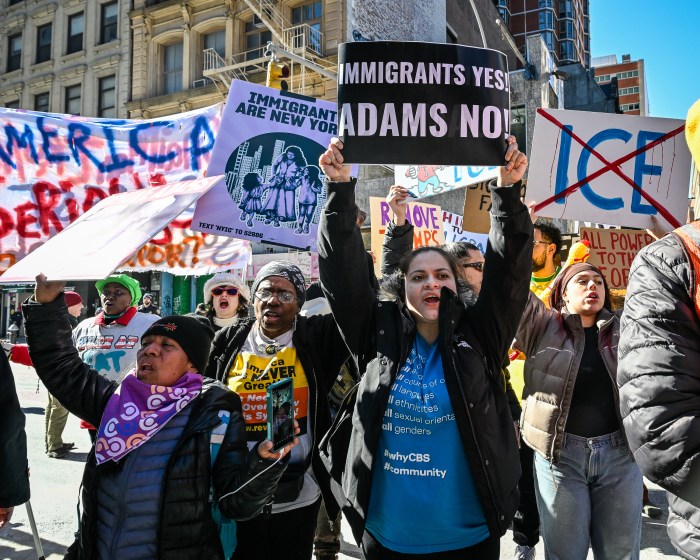
Mayor Bill de Blasio unveiled a $10 billion proposal Thursday to bulk up lower Manhattan in an attempt to ensure the tip of the island is not wiped away amid climate change.
He also unveiled several other ways to protect the area while releasing the results of a climate resilience study, which found that by the 2050s, 37 percent of buildings in lower Manhattan will be vulnerable to storm surges. By 2100, half of the buildings south of Canal Street will be at risk, according to the study.
In response, de Blasio and the city’s Economic Development Corporation said they would like to extend the shoreline into the East River by up to 500 feet or two city blocks. The endeavor would raise the coast ringing Manhattan south of Canal Street to at least 20 feet above the water level.
De Blasio said the federal government should fund the shore extension project and that he planned to speak with Senate Minority Leader Chuck Schumer and other Washington, D.C., players about the matter. If that effort fails, the mayor said he may seek to work with private firms on the initiative.
"It is audacious, but most of all, it is necessary," de Blasio said.
"If we can’t get that federal funding, we have to have an honest conversation with the community and the people of this city about the choices. It is not something that can be fully funded with city dollars."
The Waterfront Alliance president Roland Lewis said the city should act quickly because waters are rising.
"A substantial infill project contemplated by the Mayor’s announcement begs important questions that must be asked and answered. Will the inevitable regulatory review and possible litigation delay this project for decades? Has a thorough and transparent cost benefit analysis for all other possible options been completed?" Lewis said in a statement. "All options should be on the table, but we need to have a full understanding of the trade-offs."
The administration is advancing several other projects in lower Manhattan, which de Blasio described as a priority because of Wall Street’s oversize role in local and global economies.
James Patchett, president of the city’s Economic Development Corporation, said his team is working on $500 million worth of endeavors in the area.
The city is working on designing reconstructions of the esplanade and open space at Battery Park City so the area is adapted to the 100-year storm surge. The government envisions starting construction in 2020 and paying for the project with $134 million in bonds, according to Patchett.
In Two Bridges, the city is slated to install retractable flood walls that act like draw bridges and flip up from the street during high floods. Construction on the $200 million project will begin in 2021, according to Patchett.
In that same year, the city will begin construction at the Battery that will elevate the wharf and esplanade and include a barrier against storm surges.
By this summer, the city’s Office of Emergency Management aims to deploy temporary measures such as water-filled dams and sand-filled barriers in lower Manhattan.




































